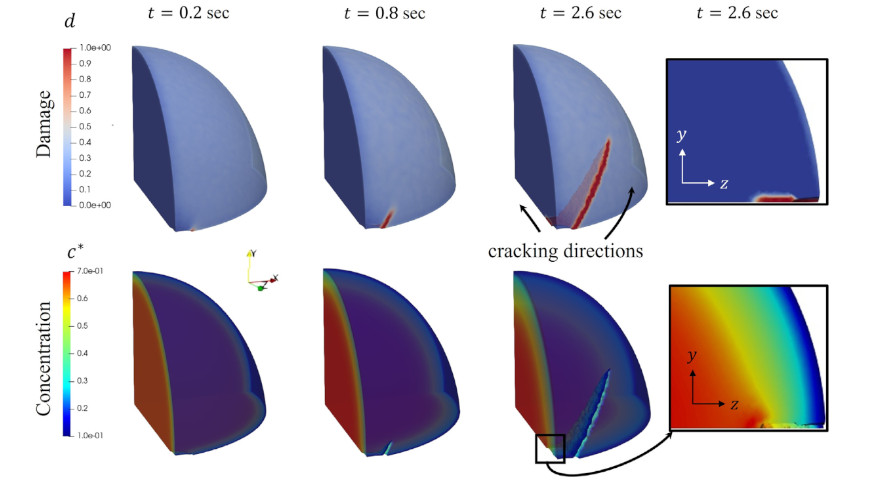A Cohesive Phase-Field Fracture Model for Chemo-Mechanical Environments: Studies on Degradation in Battery Materials
New Publication in “Theoretical and Applied Fracture Mechanics”
2023/03/29

Authors: Shahed Rezaei, Jacob Niikoi Okoe-Amon, Cerun Alex Varkey, Armin Asheri, Hui Ruan, Bai-Xiang Xu
In the context of computational modeling of fracture in chemo-mechanical environments, physically-sound and strong coupling between different fields is essential. Furthermore, our knowledge of the fracture in a purely mechanical setting should be extended to the new realm adequately. In this work, we apply the cohesive phase-field (CPF) fracture models to address damage initiation and progression in a chemo-mechanical coupled environment. Since CPF models are shown to be independent of the length scale parameter, such models allow a unified simulation framework for bulk and interface damages that concurrently and competitively occur in the battery materials. First, a thermodynamical framework is discussed to obtain all the possible coupling terms consistently. Through a systematic derivation from dissipation inequality and by performing various studies, we intend to comparatively demonstrate the role of different coupling terms and their impact on the obtained results. Specifically, we focus on (1) the influence of the stress field as well as the damage variable on the flux vector, (2) concentration-dependent fracture properties, (3) advantages of cohesive phase-field formulation in the multiphysics environment, and (4) influence of phase-transformation on the cracking mechanism in solids. Finally, we present some initial studies on a simplified system of a solid-state battery system, where cracking inside a single crystalline active material surrounded by a solid electrolyte is under focus. The results of the study show the dominant crack patterns. Such investigations open up opportunities for better design of battery microstructures and enhance their lifetime and performance at the cell level.



